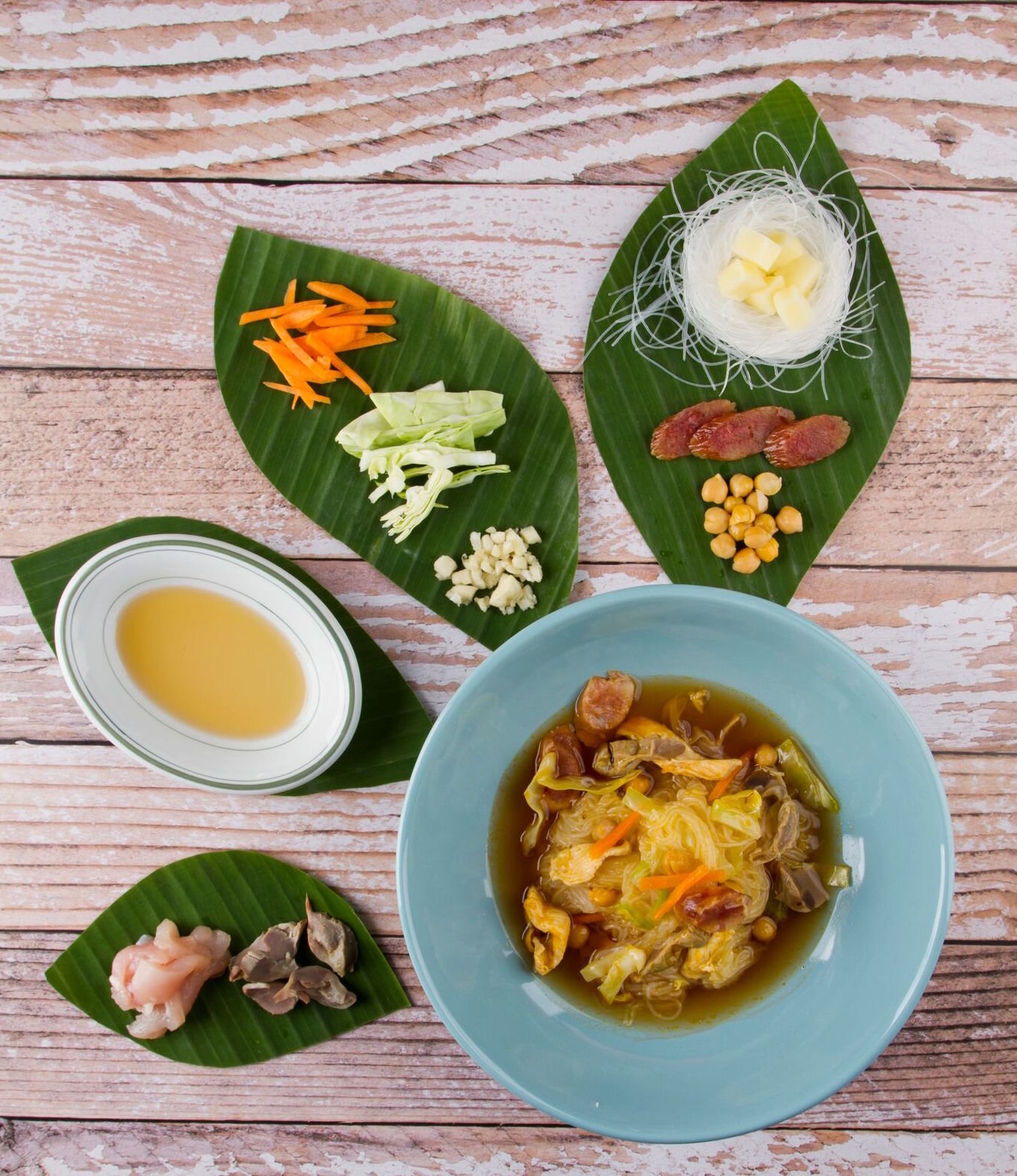The Happy Home Cook: Calandracas
/The Happy Home Cook features cherished recipes of Filipino dishes from well-known foodies and contributors. If you have a recipe that you are proud of and would like to share, please send it along with a photo of the dish, your two-sentence bio and your picture to submissions@positivelyfilipino.com.
Calandracas (Photo by Stanley Ong)
Calandracas started out as a soup dish served during wakes. Its origins come from calandra, the Chabacano word for funeral stretcher. In the coastal towns of Cavite City, Naic and Tanza, people would pay tribute to the departed with ingredients such as vegetables, livestock, and spices. The collective offerings having been placed on the calandra were sorted and cut into small pieces and then thrown into a huge simmering kawa containing soup stock made from chicken.
Calandracas has since evolved from its agrarian roots as the introduction of evaporated milk, ham and macaroni during the American period changed its culinary complexion, from food intended for wakes and mourning, to a celebratory dish for the Media Noche or New Year’s eve dinner.
In Imus and Cavite City, the bone of the ham, whether it is hamon Chino or hamon Iberico is saved from the previous Christmas. It is then lightly baked with aromatic vegetables like carrots, onion, and celery and the oil and crusty bits are deglazed and made into soup stock.-Elizabeth Ann Quirino
Reprinted with permission from the Republic of Taste: The Untold Stories of Cavite Cuisine, Coastal Cuisine Foodways and Recipes by Ige Ramos.
Ingredients
Soup Stock
2 liters water
½ of a whole chicken
1 ham bone
1 onion, chopped
1 bay leaf
1 stalk celery, chopped
1 teaspoon whole peppercorns
3 chicken gizzards
4 cups water
Achuete Water
1 teaspoon achuete (annatto)
½ cup water
Calandracas Soup Base
1 whole garlic, minced
2 medium-sized onions, chopped
1 (6-inch) Chorizo Bilbao, sliced 1/8-inch thick, diagonally
1 carrot, ¼-inch cubed
1 potato, ¼-inch cubed
½ cup garbanzos (canned), drained, skins removed|
Patis (fish sauce) to taste
1 cup shredded cabbage
250 g. sotanghon noodles
Procedure
Place the chicken, ham bone and the rest of the ingredients in a stockpot with cold water. Bring to a boil, lower the heat and continue to simmer for one hour while skimming off any residue. Remove the chicken and allow it to cool. Shred the meat and some skin and set aside.
Wash the gizzards thoroughly and boil until tender. Cut into ¼-inch strips. Set aside.
Soak the achuete for five minutes in warm water, strain in a clean bowl, and discard the seeds.
To prepare the soup base: In a saucepan, sauté the onions and garlic, taking care not to burn the garlic. Once the onion turns translucent, add the gizzard, chorizo and shredded chicken. Mix in the carrot, potato and garbanzos. Stir for five minutes. Add the achuete water and season with patis and pepper. Add the broth slowly, one cup at a time. Once the soup starts to boil, lower the heat and add the cabbage and sotanghon. Simmer for 15 minutes and serve in small soup bowls.
Tip: Macaroni and evaporated milk are widely used in making calandracas in Imus and Cavite City. Alternatively, shell macaroni can be used instead of sotanghon. Add the macaroni together with the carrot, potato and garbanzos, and substitute 1 cup of evaporated milk for the achuete water.
Republic of Taste: The Untold Stories of Cavite Cuisine by Ige Ramos
For more on Guillermo “Ige” Ramos, Jr. and Caviteño cuisine: http://www.positivelyfilipino.com/magazine/food-historian-ige-ramos-serves-cavites-unsung-cuisine
More from Guillermo “Ige” Ramos, Jr.



